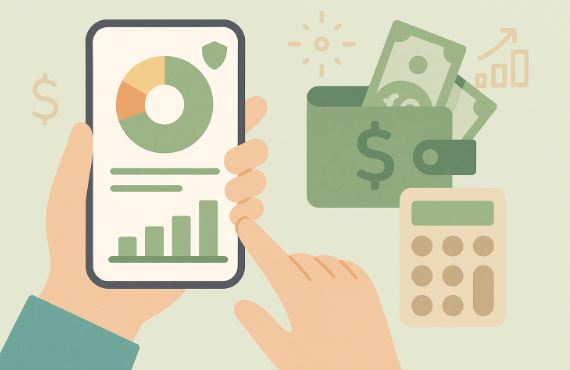The Benefits of Using a Smartphone Wallet
18th October 2024
Jake Hopkins
In the modern era of digital technology, the importance of utilizing a smartphone wallet for both convenience and security cannot be emphasized enough. As the necessity for a physical wallet diminishes, an increasing number of individuals are opting for this innovative solution to facilitate their daily transactions.
Amidst the plethora of smartphone wallet options available on the market, determining the most suitable choice can be a daunting task. Consequently, an analysis of the benefits associated with utilizing a smartphone wallet, a comparison of popular alternatives, a detailed guide outlining the setup and utilization process, as well as recommendations for optimizing its functionalities will be presented.
What is a Smartphone Wallet?
A smartphone wallet, also referred to as a digital or e-wallet, is a secure and convenient mobile application designed to facilitate financial transactions and payments through smartphones.
These digital wallets securely store users' credit/debit card information, loyalty cards, and even cryptocurrency within the application. They utilize technologies such as Near Field Communication (NFC) to facilitate swift and secure transactions by simply tapping the phone at payment terminals.
The popularity of e-wallets has increased due to their convenience, speed, and advanced security features that safeguard users' financial information. Additionally, users can avail of functionalities such as budget tracking, loyalty rewards, and the ability to easily split bills or transfer funds to acquaintances.
Advantages of Using a Smartphone Wallet
The utilization of a smartphone wallet provides users with a multitude of advantages, such as heightened convenience, enhanced security features, the capability to conduct digital transactions, and the progression towards a cashless economy.
Convenience and Security
The integration of convenience and security is a crucial component of smartphone wallets, providing users with effective management of their financial transactions. This streamlined experience is facilitated by stringent security measures, including data encryption, which safeguards sensitive financial data from unauthorized access.
Additionally, secure authentication methods such as biometric recognition or PIN codes contribute an additional level of security, thereby enhancing the overall protection of transactions. The combination of user-friendly interfaces with advanced security protocols makes smartphone wallets a reliable and secure method for conducting payments and handling finances while on the move.
Reduced Need for Physical Wallet
The utilization of smartphone wallets offers individuals the opportunity to significantly lessen their dependence on physical wallets, thereby simplifying their daily transactions and improving accessibility for retail purchases.
This shift towards digital wallets underscores the growing prevalence of mobile technology in everyday life. With the capability to store multiple payment methods on a single device, users can seamlessly conduct transactions without the necessity of carrying cash or multiple cards. The convenience of accessing payment methods via smartphones enables individuals to make purchases with minimal effort, thereby expediting the checkout process at various retail outlets. This transition towards digital payment methods not only provides convenience but also heightens security by diminishing the susceptibility to physical theft or loss associated with traditional wallets.
Different Types of Smartphone Wallets
Users have access to a variety of smartphone wallet options, such as e-wallets, virtual cards, and integrated platforms designed to guarantee compatibility across multiple devices.
Comparison of Popular Options
When contemplating smartphone wallets, individuals have the opportunity to assess popular options accessible through mobile applications, each employing advanced technology to ensure seamless integration and efficient financial management.
For example, a considerable number of individuals value the user-friendly interfaces offered by applications such as Apple Pay and Google Pay, facilitating quick and convenient digital transactions. Apple Pay distinguishes itself with its compatibility with Siri, enabling users to conduct transactions through voice commands. In contrast, Google Pay provides a wider array of functionalities, including rewards programs and peer-to-peer payments. Both applications prioritize security by leveraging tokenization to safeguard users' sensitive financial data during transactions. These smartphone wallet applications have fundamentally transformed how individuals manage their finances in the contemporary digital era.
How to Set Up and Use a Smartphone Wallet
The establishment and utilization of a smartphone wallet entail a series of procedural steps aimed at enabling streamlined transactions, a variety of payment options, and secure online shopping experiences facilitated by wireless technology with integration to bank accounts.
Step-by-Step Guide
For assist users in effectively utilizing a smartphone wallet, a systematic guide can be instrumental in streamlining the process. This, in turn, ensures ease of use, facilitates instant payments, and potentially offers cashback rewards for transactions.
It is imperative to select a reputable smartphone wallet application from the app store based on user feedback and ratings. Following the download and installation of the application, the user should proceed to create a secure account by adhering to the on-screen prompts. Subsequently, it is advisable to link a preferred payment method, such as a credit/debit card or bank account, to facilitate seamless transactions.
It is recommended to establish security features, such as PIN codes or biometric authentication, to safeguard the wallet from unauthorized access. Users are encouraged to explore the application's capabilities, including functionalities like transaction history, balance check, and cashback offers, to enhance and optimize their overall experience.
Tips for Maximizing the Benefits of a Smartphone Wallet
For maximize the benefits of utilizing a smartphone wallet, individuals should adhere to particular guidelines concerning:
- the encryption of financial data,
- meticulous tracking of budgets,
- proficient management of finances,
- strong protection against fraudulent activities, and
- the maintenance of a detailed transaction history.
Best Practices for Security and Organization
Adhering to best practices for security and organization when utilizing a smartphone wallet is essential to protect personal financial data, efficiently manage digital receipts, ensure comprehensive personal finance management, safeguard sensitive information, and maintain a seamless transaction experience.
Incorporating features such as digital receipts enables users to conveniently track and categorize their expenses, thereby helping with budgeting and financial planning. The utilization of personal finance management tools within smartphone wallets provides users with real-time insights into spending patterns and financial well-being. Furthermore, enhanced data protection measures enhance security by encrypting sensitive information and securing transactions. Ensuring a seamless user experience during transactions not only cultivates trust but also streamlines the entire payment process, ultimately improving user satisfaction and loyalty.















